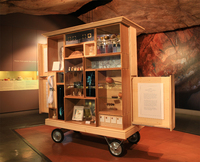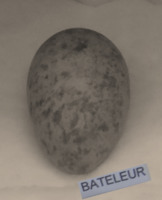Items
Site
The Medicine Chest
keywords is exactly
protection
-

Clivia's in Kirstenbosch
Part of the ‘Useful plants’ section at Kirstenbosch National Botanical Garden. -

Iroko
Structurally, 'Chest: a botanical ecology' consisted of 15 modular interlocking cabinets of differing sizes which rested on top of one another, making up the front of the display. These were constructed from two types of wood, the darker iroko wood, and a lighter ash wood – with the iroko originating from the repurposed cabinets used for Curiosity CLXXV in 2004. The Iroko tree is a large hardwood tree from the west coast of tropical Africa, known by the Yoruba as ìrókò, logo or loko. Believed to have supernatural properties, it can live up to 500 years. Yoruba people believe that a spirit inhabits the tree, and anybody who sees the Iroko-man face to face becomes insane and dies. According to the Yoruba, any man who cuts down any Iroko tree causes devastating misfortune on himself and all of his family. In West Africa, the iroko wood is also used to make the djembe drum. If they however, need to cut down the tree, they can make a prayer afterwards to protect themselves. Used for a variety of purposes including boat-building, domestic flooring, furniture and outdoor gates, from the late 1990s, it was also used as part of the txalaparta, a Basque musical instrument constructed of wooden boards, due to its lively sound and classified as an idiophone (a percussion instrument) (Ogumfe 1929: online)). -

Bataleur egg
Situated in a locked bespoke cabinet in the Niven Library in UCT’s Percy Fitzgerald Institute of African Ornithology, this Bataleur eagle egg is part of a collection of eggs donated by the ornithologist Peter Steyn in 2007. Collected between 1961 and 1977, when Steyn spent time in Zimbabwe, the egg is a link to the iconic stone carved Zimbabwe Birds which once stood proudly on guard atop the walls and monoliths of the ancient city of Great Zimbabwe, believed to be built between the 12th and 15th centuries by ancestors of the Shona. The overall shape of the birds suggests that of a bateleur eagle – a bird of great significance in Shona culture. The bateleur or chapungu is a good omen, the symbol of a protective spirit and a messenger of the gods.


